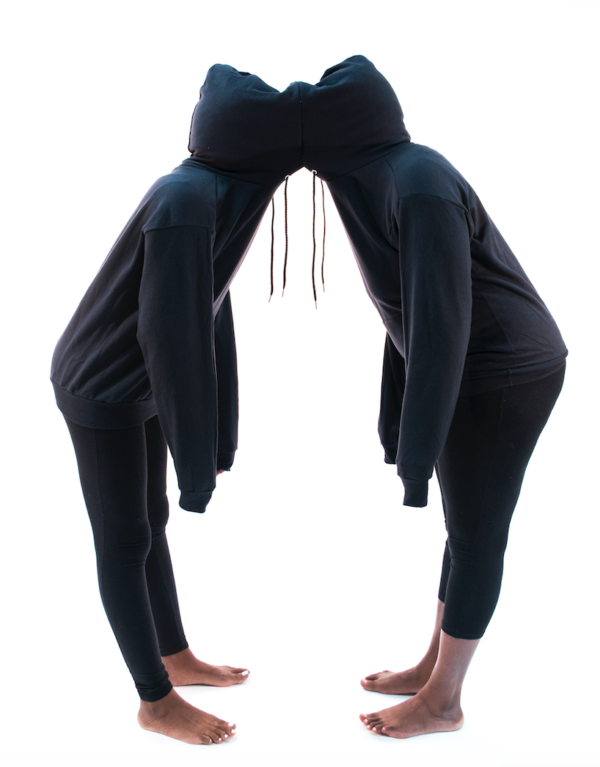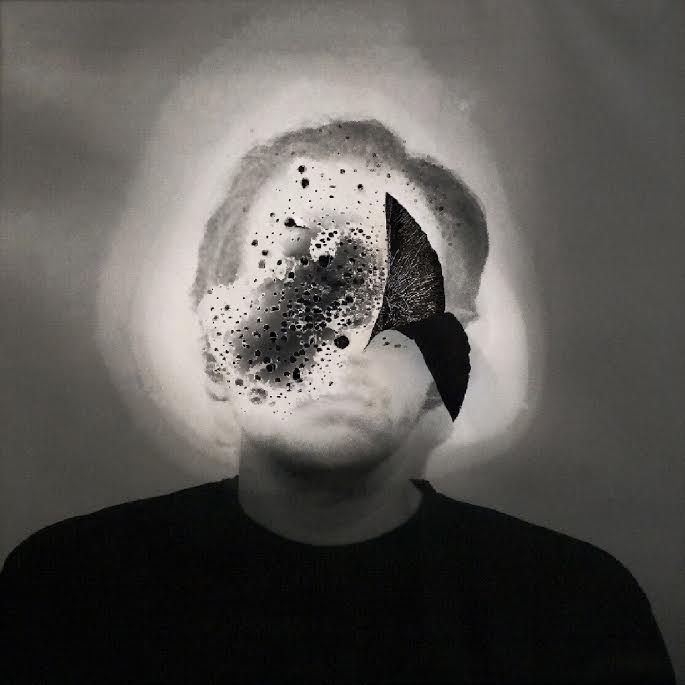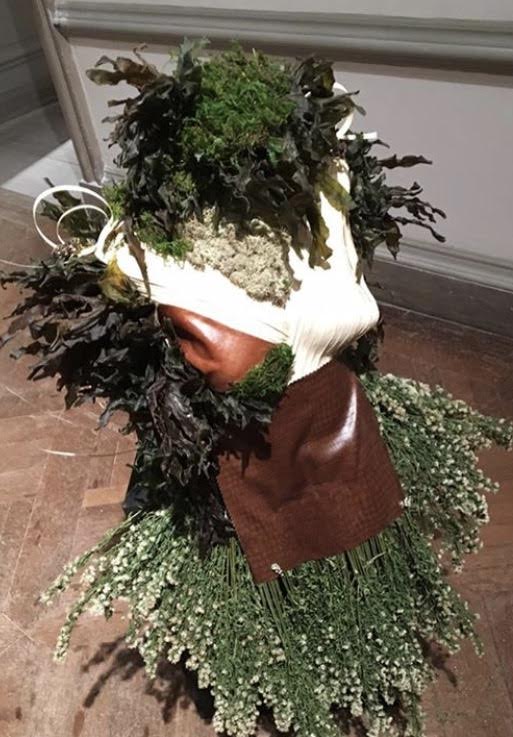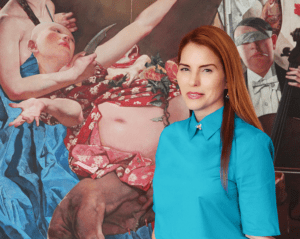We all know and love our favorite blue-chip artists, but have you ever thought of what their work was like before fame? Some were probably students at some point in time, working toward their recognition in the art world. Students waiting to inspire and be inspired by their audience. It’s a struggle climbing that ladder of success and here at Art Zealous, we recognize that.
Art students are the next generation of intellects, innovators, and revolutionaries. The next faces of change in the art world are always popping up and we have found a few right in our nation’s capital at The Corcoran School of the Arts and Design. Part of George Washington’s Columbian College of Arts and Sciences, the school functions as an incubator for artists and practitioners in arts-related fields and serves to enrich students who are taking classes in other areas of the university.
So if you are thinking about art school, confused or simply just want to be inspired, this is for you. Here are ten artists to look out for from the Corcoran thesis student exhibition, NEXT.
Khadija Wilson

AZ: What is your practice/process?
KW: Using sculpture, video, and photography, my work investigates the body and its related elements, as a site of intervention. My practice starts by gathering information from multiple fields, namely visual culture and black performance theory. Additionally, examining works by cultural producers who are heavily impacted by these fields. Motivated by, but not restricted to these sources, I combine components of personal narrative with theory.
AZ: What unique perspective do you have to offer the art world?
KW: My work explores the visibility of black subjects within our contemporary visual culture. Object of Neglect attempts to call into question the viewer’s own assumptions and narratives that are aligned with black subjects.
AZ: Describe your work in 3 words?
KW: Critical, intimate, generates mood
AZ: Whats next for you as an artist?
KW: I was accepted into Teach For America, a two-year program that trains corps members to teach a variety of subjects in low-income areas. I am assigned to teach special education grades 6-12 in The Greater New Orleans.
AZ: Favorite moment at the Corcoran?
KW: Favorite Moment: The Mannequin challenge.
Eddy Leonel Aldana

AZ: What is your practice/process?
ELA: Everything I do stems from the loss of my father. He passed away in June of 2014 so my work since then has been based around him passing away. He was always really hardworking and motivated, so I think his work ethic has been transferred to me and all I want to do is make him proud by working as hard as he did. He’s the reason I do everything I do.
AZ: What unique perspective do you have to offer the art world?
ELA: I’m just trying to be honest and share my feelings. I want people to get something out of my work whether it is being able to relate or just to realize that maybe they need to tell someone “I love you,” that’s important to me.
AZ: Describe your work in 3 words?
ELA: Quiet, poignant, and hopeful
AZ: Whats next for you as an artist?
ELA: Right now, I’m planning on attending grad school to get an MFA because I want to teach.The goal is grad school and to make more work.
AZ: Favorite moment at the Corcoran?
ELA: I’m really thankful for all of the lifelong friends I’ve made here and all the valuable knowledge that has been passed down to me by my peers and professors.
Jack Mead

AZ: What is your practice/process?
JM: My process is hard work and dedication, and I think it is important to plan as big as you can initially and downscale later if it is necessary, fortune favors the bold.
AZ: What unique perspective do you have to offer the art world?
JM: Growing up across three continents, I feel it’s vitally important that we look at how we spend our time beyond the familiar, and think about what we choose to do from a global viewpoint.
AZ: Describe your work in 3 words?
JM: Practice makes perfect.
AZ: Whats next for you as an artist?
JM: Continuing to work at creating VR content and experiences with social, cultural, therapeutic, and educational relevance and applications.
AZ: Favorite moment at the Corcoran?
JM: The friends I made during the first week at school ended up becoming my closest friends over the years and we all stayed very close throughout our time at the Corcoran, so I guess the moments with them going from being strangers to how we are now.
Patrick Quinn

AZ: What is your practice/process?
PQ: My practice crosses a variety of media, including performance, sculpture, and multimedia installations. I’m exploring the deep impact of empathy on the human experience. Whether it’s focused inwards, projected onto abstracted idea of people or felt in the deep relationships we can so easily create with one another.
AZ: Describe your work in 3 words?
PQ: Participatory, contemplative and raw.
AZ: Whats next for you as an artist?
PQ: After this exhibition closes, I plan to begin directing my work and practice into more rural and wild landscapes, integrating installations and performances into environments outside of the gallery.
AZ: Favorite moment at the Corcoran?
PQ: I have to say my proudest moment at the Corcoran has been watching the community of poets and writers begin to flourish and grow their voices together
Robert Leon Scheirer III

AZ: What is your practice/process?
RLS: My practice and process starts with a concept that I have a passion for. Then I start experimenting with different techniques that will bring my concept to light by working and developing it.
AZ: What unique perspective do you have to offer the art world?
RLS: I think I work in a way that I use different types of mediums together, not saying I’m the first to do it. I do believe that I’m working and seeing photography in a different way.
AZ: Describe your work in 3 words?
RLS: Self-reflection, pain, hope.
AZ: Whats next for you as an artist?
RLS: Hopefully attending grad school and continue to create new work. I see myself still working with canvas inkjet prints and the process of cutting and ripping the prints to expose background images.
AZ: Favorite moment at the Corcoran?
RLS: Being in a community with creative peers and professors who taught me a lot was a great experience.
Xohalmá Chauffe

AZ: What is your practice/process?
XC: I allow myself to work intuitively. This process is the most important part to me while developing a piece and is where much of my gratification comes from.
AZ: What unique perspective do you have to offer the art world?
XC: My spirituality and connection to the earth play a very large role in my life, and it shows through much of my work; as well as the issues I face concerning identity, sexuality, religion and race. Existing as a Queer, androgynous identifying, two-spirit, Muslim, femme-presenting, multi-ethnic, person of color / black person in America is quite loaded on so many levels.
AZ: Describe your work in 3 words?
XC: Aggressive, bold, organic.
AZ: Whats next for you as an artist?
XC: I’ve been offered an amazing opportunity to work with the conceptual artist and choreographer, Maida Withers, on an upcoming project slated to open the beginning of 2018.
AZ: Favorite moment at the Corcoran?
XC: NEXT. Being able to marvel at the work that was a result of how far each and every one of us has come over the past four years, all in one place was an amazing privilege.
Noah McWilliams

AZ: What is your practice/process?
NM: My process starts with intuition. For me, the only creative exploration worth pursuing is one that scares me or creates discomfort. Understanding the emotion a pairing brings up in me, and exploring the place of my own emotion and self within a larger societal context is often the heart of my work.
AZ: What unique perspective do you have to offer the art world?
NM: I bring together elements of science fiction and fantasy in a somewhat humorous way to explore themes of masculinity and the fragility, vulnerability, and aggression that it holds.
AZ: Describe your work in 3 words?
NM: Fantastical, playful, and meticulous
AZ: Whats next for you as an artist?
NM: I plan to spend the next year creating new work, applying for fellowships, and preparing grad school applications.
AZ: Favorite moment at the Corcoran?
NM: I would say my favorite moment at the Corcoran was the first moment of every semester, before doubts set in about whether the staff and curriculum would exist in its current state or be further dismantled.
Alexandra Baran

AZ: What is your practice/process?
AB: I’m a photographer who constantly feels an urgent need to make images. Whether it be with a phone, a plastic toy camera, screenshots, collages, whatever. The work “An Exquisite Death” is the first time I took digital photography seriously. I will see something in passing that aligns with my own personal interest and vision, and I pursue it for a photograph, usually with my heart racing.
AZ: What unique perspective do you have to offer the art world?
AB: I try to make my newer work subtly contemporary. I grew up around a lot of religious imagery as a child that was held in such high reverence. Today, these archaic churches have no place in the secularized US. I was taught so many limits and rules growing up and now I am breaking them in very slight and deliberate ways.
AZ: Describe your work in 3 words?
AB: Sinister, symbolic, nostalgic.
AZ: What’s next for you as an artist?
AB: I am interested in pushing the boundaries of the contemporary image in my newer work. After making very formal black and white prints for my thesis, I feel the need to tap into a different, more relevant process.
AZ: Favorite moment at the Corcoran?
AB: When I realized that I couldn’t do anything else with my life other than photography. I realized I have been a writer and a visual person for as long as I can remember, it just took this place to really get me going.
Lionel Frazier White III

AZ: What is your practice/process?
LFW: My practice and process is a back and forth between concept, making, and analysis. My concepts inform the work, and the work informs the concept.
AZ: What unique perspective do you have to offer the art world?
LFW: I don’t think my perspective is all that unique but a part of a perpetual conversation and dialogue. The uniqueness is in the intricacies of how I manifest the ideas through my work.
AZ: What’s next for you as an artist?
LFW: The next step is to teach and find community. I want to cultivate relationships with other artist and creatives. Alongside art, child development and teaching are passions I want to use to help supplement my practice.
AZ: Favorite moment at the Corcoran?
LFW: My favorite moment at Corcoran was an all-nighter where me and my friends had a water gun fight during a mental break.
Anthony Pattermann

AZ: What is your practice/process?
AP: I decided that the concept of my thesis work would manifest itself as sculpture. For my work, A Generative ForceI felt the need to explore using construction materials.
AZ: What unique perspective do you have to offer the art world?
AP: Anybody that decides to make their work public has a unique perspective, the very nature of their character is evident in their work. An artist’s efforts become unique through work and research. I can’t imagine that similar topics would be handled exactly the same way repeatedly.
AZ: Describe your work in 3 words?
AP: A generative force.
AZ: What’s next for you as an artist?
AP: My future works will probably engage a more specific facet of science. Evolution, early hominids, and early man are topics I also find fascinating.
AZ: Favorite moment at the Corcoran?
AP: Davide Prete’s metal smithing class, specifically, the day we used the anvil & 10 lbs. hammer to shape red hot metal from his forge, it was something I’ll never forget
all images// courtesy of the artists, top image, courtesy of GWU



